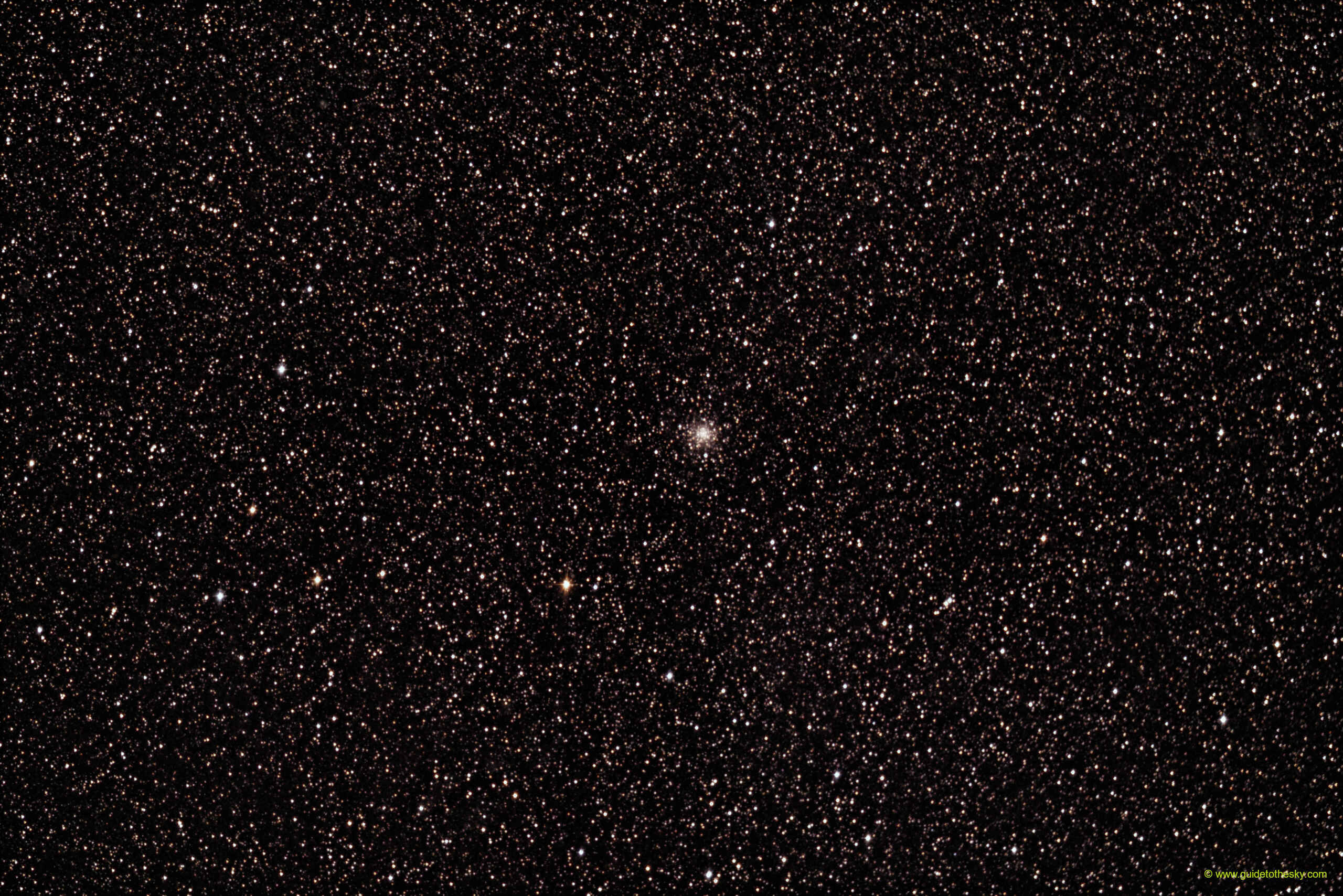Messier 56 - Lyra
NGC 6779

Exp: 30m 22s
M56 también catalogado como NGC 6779 es un interesante y pequeño cúmulo globular que no supera los 8' de diámetro.
M56 brilla a medio camino entre las constelaciones del Cisne y Lyra, aunque según está dividido el cielo pertenece a esta última.
Segun {{ object[0].M56.mesDistances[0].bibcode }}, M56 se encuentra a {{ object[0].M56.mesDistances[0].dist }} {{ object[0].M56.mesDistances[0].unit }} de distancia, lo que supera con mucho la distancia del Sol al centro galáctico.
M56 brilla a medio camino entre las constelaciones del Cisne y Lyra, aunque según está dividido el cielo pertenece a esta última.
Segun {{ object[0].M56.mesDistances[0].bibcode }}, M56 se encuentra a {{ object[0].M56.mesDistances[0].dist }} {{ object[0].M56.mesDistances[0].unit }} de distancia, lo que supera con mucho la distancia del Sol al centro galáctico.
M56 - NGC 6779 - en la IA
Messier 56 (M56), also known as NGC 6779, is a globular cluster located in the constellation Lyra. Here's a breakdown of its key features and information:
Key Characteristics:
- Type: Globular Cluster
- Constellation: Lyra
- Distance: Approximately 32,900 light-years from Earth
- Diameter: Approximately 84 light-years
- Magnitude: About 8.3 (fairly faint, requires binoculars or a telescope to see)
- Metallicity: Very metal-poor, meaning its stars contain a lower abundance of elements heavier than hydrogen and helium compared to the Sun. This suggests it's an older cluster.
- Variable Stars: Contains a relatively small number of known variable stars, including RR Lyrae variables.
- Density: Less dense than many other globular clusters, making it somewhat loosely structured.
Observational Information:
- How to Find It: Located about halfway between Albireo (Beta Cygni) in Cygnus and Sulafat (Gamma Lyrae) in Lyra.
- Best Viewing Time: Summer months are ideal when Lyra is high in the northern sky.
- What to Look For: Through binoculars, M56 appears as a faint, fuzzy ball of light. A small to medium-sized telescope will begin to resolve some of the individual stars, especially towards the edges of the cluster. Larger telescopes will reveal even more stars and detail within the cluster's core.
Interesting Facts:
- M56 was discovered by Charles Messier on January 19, 1779.
- William Herschel was one of the first to resolve the cluster into individual stars.
- Its relatively low density is a factor in its looser appearance compared to more compact globular clusters.
- Studies of its stars have helped astronomers understand the formation and evolution of globular clusters.
- M56 is considered a fairly "ordinary" globular cluster, lacking any particularly unusual or extreme characteristics, but it's still a beautiful and rewarding object to observe.
In short, Messier 56 is a somewhat faint, moderately distant, and loosely structured globular cluster in Lyra. While not as spectacular as some of the brighter globulars like M13 or M22, it is still a worthwhile target for amateur astronomers with telescopes.
Más información sobre Messier 56 en NASA/IPAC.
Mapa alrededor de Messier 56
Otros identificadores de M56:
"C 1914+300" ,"CSI+30-19146 3" ,"GCRV 11736" ,"GCl 110" ,"M 56" ,"NGC 6779" ,"[KPS2012] MWSC 3077",

